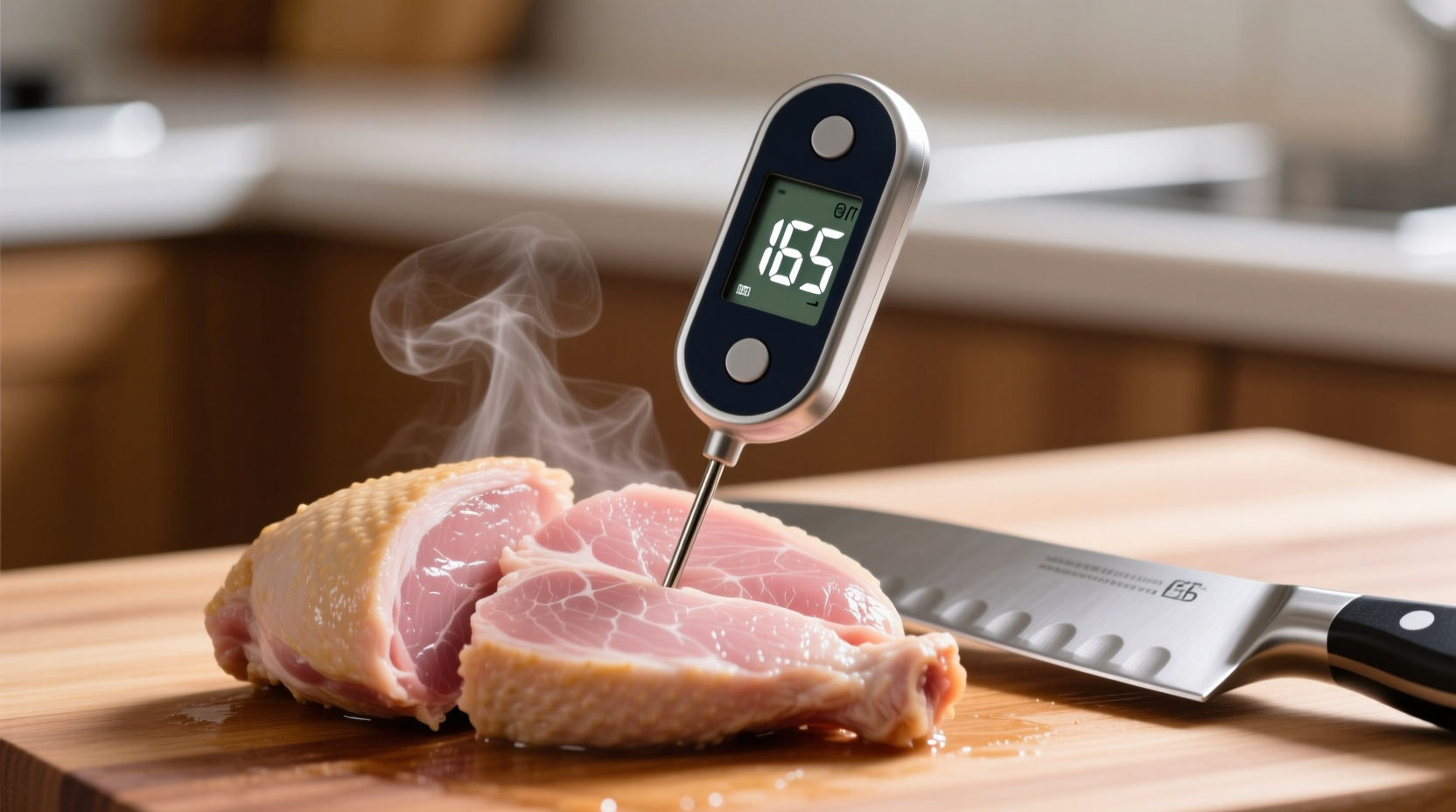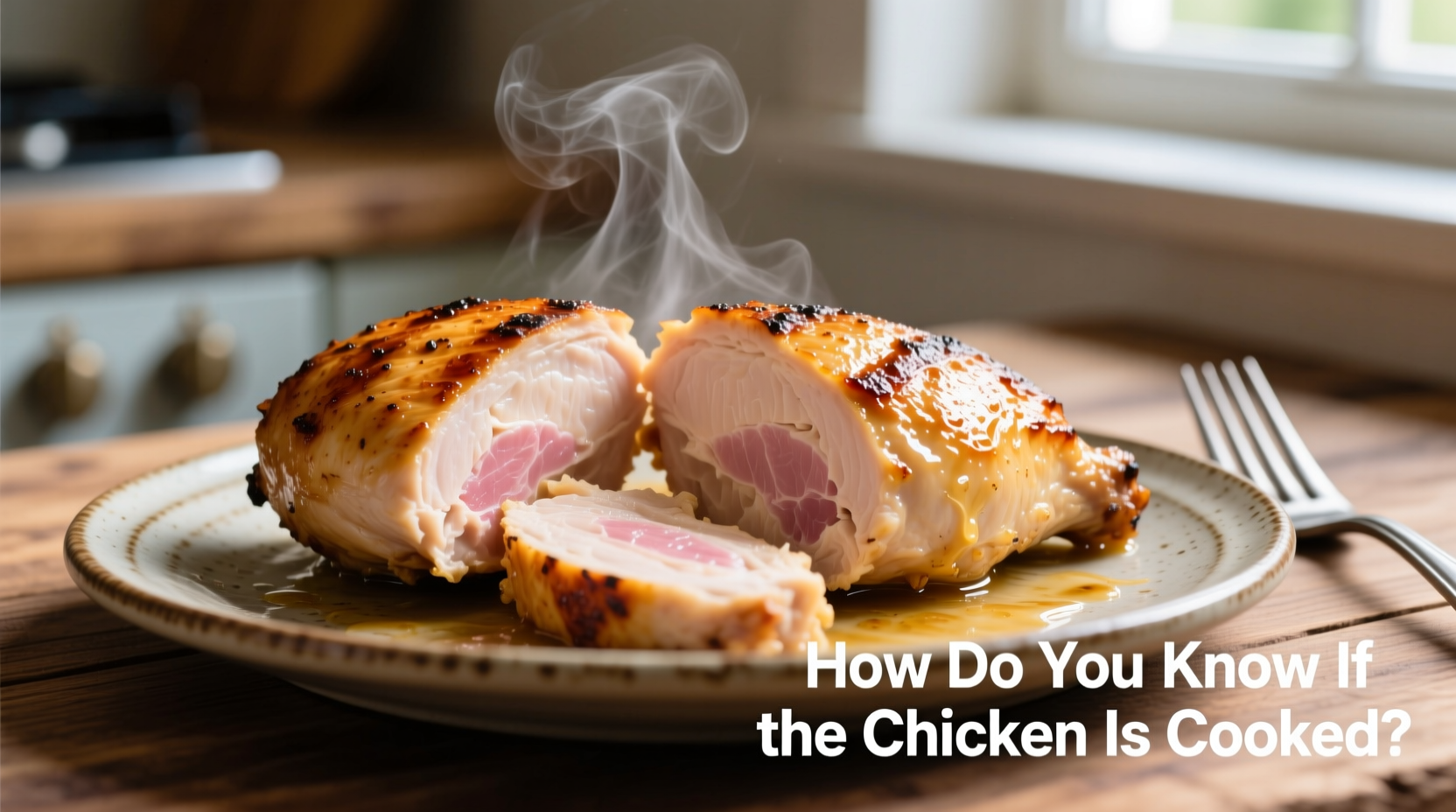Knowing exactly when chicken is properly cooked isn't just about avoiding foodborne illness—it's the difference between dry, overcooked poultry and juicy, flavorful meat. Many home cooks rely on unreliable visual cues that can put them at risk. Let's explore the science-backed methods that guarantee safe, perfectly cooked chicken every time.
The Critical Temperature Threshold
According to the USDA Food Safety and Inspection Service, chicken must reach 165°F (74°C) to eliminate dangerous pathogens. This isn't arbitrary—scientific research shows that salmonella bacteria die almost instantly at this temperature.
| Chicken Type | Safe Internal Temperature | Resting Time |
|---|---|---|
| All chicken (breasts, thighs, wings) | 165°F (74°C) | 3-5 minutes |
| Stuffed chicken | 165°F (74°C) in both chicken and stuffing | 5-10 minutes |
| Leftover chicken | 165°F (74°C) | Not required |
Four Reliable Methods to Check Chicken Doneness
1. Digital Thermometer: The Gold Standard
Insert an instant-read thermometer into the thickest part of the meat, avoiding bones. For accurate readings:
- Calibrate your thermometer monthly using ice water (32°F/0°C) or boiling water (212°F/100°C)
- Check multiple spots in larger pieces
- Wait 10-15 seconds for the reading to stabilize

2. Visual Indicators: What to Look For
While not as reliable as a thermometer, these visual cues can serve as secondary confirmation:
- Color change: Meat transitions from pink to opaque white (note: some properly cooked chicken may retain a slight pink hue near bones due to myoglobin)
- Juices: Run clear, not pink or red
- Texture: Firm but yielding to gentle pressure
3. Tactile Testing: The Finger Method
Compare the firmness of cooked chicken to the fleshy part of your palm below your thumb:
- Raw: Feels like the softness when your hand is relaxed
- Medium-rare (not safe for chicken): Like your palm when making a loose fist
- Properly cooked: Similar to the firmness when pressing thumb and middle finger together
4. Resting Time: The Final Cooking Phase
After removing chicken from heat, let it rest for 3-5 minutes. During this time:
- Internal temperature continues to rise 5-10 degrees (carryover cooking)
- Juices redistribute throughout the meat
- Fibers relax, improving texture and moisture retention
Common Misconceptions That Risk Food Safety
The Pink Chicken Myth
Many people mistakenly believe pink chicken is always undercooked. The USDA explains that properly cooked chicken (165°F) may still appear slightly pink due to:
- Naturally occurring myoglobin in the meat
- Reaction with air during cooking
- Presence of certain marinades or rubs
Conversely, chicken that appears fully white may still be under 165°F. Always verify with a thermometer.
Clear Juices Aren't Enough
Research from the Centers for Disease Control and Prevention shows that chicken can have clear juices while still harboring dangerous bacteria. Relying solely on juice color has led to numerous foodborne illness outbreaks.
Special Considerations for Different Cuts
Breasts vs. Thighs
While all chicken requires 165°F for safety, dark meat (thighs, drumsticks) can tolerate slightly higher temperatures (up to 175°F) without drying out due to higher fat content. White meat (breasts) becomes dry and tough beyond 165°F.
Brined or Marinated Chicken
Brining can cause chicken to retain more moisture and sometimes appear pinker when fully cooked. Always verify with a thermometer regardless of color.
Troubleshooting Guide
If Chicken Is Undercooked
Return to heat immediately. If you've already cut into it:
- Place back in pan or oven
- Check temperature every 2-3 minutes
- Do not wash the meat—this spreads bacteria
If Chicken Is Overcooked
Rescue dry chicken by:
- Slicing thinly against the grain
- Serving with sauce or broth
- Shredding for sandwiches or salads
When to Discard Chicken
Throw away chicken if:
- It smells sour, sulfuric, or ammonia-like
- Surface feels slimy or sticky
- It's been in the temperature danger zone (40-140°F) for more than 2 hours
Essential Food Safety Timeline
Understanding the time-temperature relationship is crucial for safe chicken preparation:
- 0-4 hours: Safe refrigeration time for raw chicken
- 40-140°F: Bacteria double every 20 minutes in this danger zone
- 140°F: Salmonella begins to die (slowly)
- 165°F: Instant destruction of salmonella and other pathogens
- 170°F+: Rapid moisture loss in white meat











 浙公网安备
33010002000092号
浙公网安备
33010002000092号 浙B2-20120091-4
浙B2-20120091-4